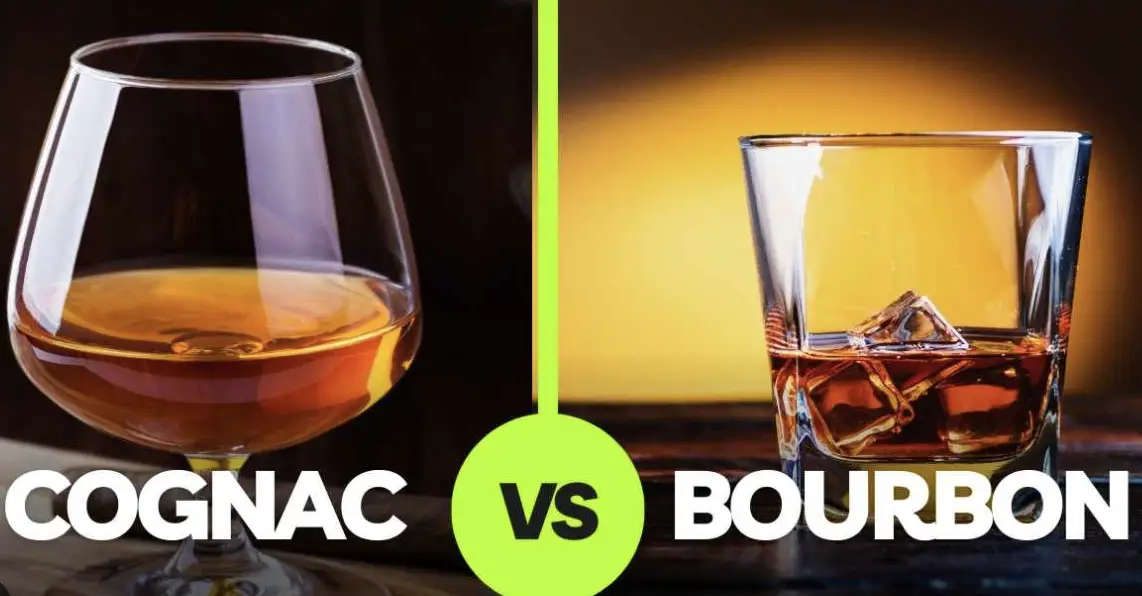When it comes to premium spirits, cognac and bourbon hold a special place in the hearts of connoisseurs. With their distinct origins, production methods, and flavor profiles, these two iconic drinks offer unique experiences. In this blog post, we will delve into the world of cognac and bourbon, comparing and contrasting their characteristics, highlighting their differences, and celebrating the elegance of cognac and the boldness of bourbon.
- Origins and Production: Cognac: Cognac is a French brandy produced in the Cognac region, renowned for its centuries-old tradition of grape cultivation and distillation. It is made primarily from Ugni Blanc grapes and distilled twice in copper pot stills. The spirit is then aged in French oak barrels, which impart complexity and richness over time. Cognac’s production process emphasizes finesse and subtlety, resulting in a refined and elegant spirit.
Bourbon: Bourbon, often associated with American heritage, is a type of whiskey produced primarily in the United States. It is made from a grain mixture that is at least 51% corn, aged in new charred oak barrels, and distilled to no more than 160 proof. The aging process in the oak barrels contributes to its distinctive flavor profile, characterized by notes of caramel, vanilla, and oak. Bourbon’s production method emphasizes boldness and robustness.
- Flavor Profiles: Cognac: Cognac exhibits a sophisticated and nuanced flavor profile. It often presents floral and fruity notes, such as dried apricot, citrus, and raisins, with hints of spice and oak. Cognac’s aging process contributes to its smoothness and refined character, allowing the flavors to harmonize and develop complexity over time. The taste experience is often described as elegant, balanced, and subtly complex.
Bourbon: Bourbon, with its higher corn content and aging in new charred oak barrels, offers a bolder and more pronounced flavor profile. It typically showcases rich notes of caramel, vanilla, oak, and sometimes spice, such as cinnamon or nutmeg. The aging process imbues bourbon with a depth of flavors, including charred wood and a touch of smokiness, resulting in a robust and full-bodied taste experience.
- Maturation and Aging: Cognac: Cognac undergoes a meticulous aging process that significantly influences its flavor and character. It must be aged in French oak barrels for a minimum of two years, with higher-quality expressions aged for much longer. The aging process allows the spirit to develop complexity, roundness, and a velvety texture. Cognac’s aging imparts subtle oak influence and enhances the integration of flavors.
Bourbon: Bourbon must be aged in new charred oak barrels. While there is no specific aging requirement for bourbon, it often spends several years maturing to develop desirable characteristics. The interaction between the whiskey and the new oak barrels adds depth, richness, and distinct flavor elements. The aging process contributes to the caramelization of sugars in the wood, resulting in the signature caramel and vanilla flavors associated with bourbon.
- Serving and Pairings: Cognac: Cognac is traditionally served neat in a tulip-shaped glass, allowing the aromas to concentrate and be savored. It is also a popular choice for sipping after a meal or paired with a fine cigar. Cognac pairs exceptionally well with dark chocolate, nuts, and creamy desserts, providing a delightful balance to the sweetness.
Bourbon: Bourbon can be enjoyed in various ways, from sipping it neat or on the rocks to being featured in classic cocktails like the Old Fashioned or Manhattan. Itsbold and flavorful nature makes it a versatile spirit for mixing in cocktails. Bourbon pairs well with dishes featuring smoky flavors, grilled meats, barbecue, and desserts with caramel or chocolate accents.
- Cultural Significance and Heritage: Cognac: Cognac holds a significant place in French culture and is celebrated as a symbol of luxury and refinement. It has been enjoyed by aristocracy and connoisseurs for centuries. Cognac’s association with elegance, craftsmanship, and sophistication contributes to its esteemed status in the world of spirits.
Bourbon: Bourbon carries a strong cultural heritage, deeply rooted in American history and tradition. It is often associated with the American South, particularly Kentucky, which is recognized as the heartland of bourbon production. Bourbon’s popularity has grown globally, appreciated for its bold flavors and contribution to the craft of American whiskey-making.
Conclusion: Cognac and bourbon exemplify the artistry and diversity within the world of spirits. Cognac captivates with its elegance, refined flavors, and centuries-old French tradition. Its delicate balance of fruity and spicy notes entices the senses, creating a sophisticated drinking experience. On the other hand, bourbon commands attention with its boldness, robust flavor profile, and uniquely American heritage. It evokes a sense of adventure and indulgence, with its caramel and oak-infused palette.
Whether you prefer the elegance of cognac or the boldness of bourbon, both spirits offer distinct pleasures to explore and enjoy. Indulge in the refinement of cognac or revel in the richness of bourbon as you embark on a journey through their flavors and heritage. Whichever path you choose, savor the unique qualities of each spirit and celebrate the craftsmanship that makes them treasured spirits in their own right.
